Leadpages Vs Unbounce 2024: Which Is The Better Software?
Introduction:
If you are looking for a tool to create high-converting landing pages, you might have come across Leadpages vs Unbounce as two of the most popular options. But which one is better for your business? This article will compare Leadpages and Unbounce based on their features, pricing, ease of use, and customer support. We will also share some tips on choosing the best landing page builder for your business.
Landing pages are designed to capture leads, generate sales, or achieve other specific goals. They are usually linked from other sources, such as email campaigns, social media posts, or online ads. Landing pages are essential for digital marketing because they can increase conversions, improve SEO, and boost brand awareness. However, creating landing pages can be challenging if you don’t have the right tool. That’s why many marketers use landing page builders like Leadpages and Unbounce to simplify the process and create stunning landing pages in minutes.
Key Takeaways:
Leadpages or Unbounce, which one will you pick? It all depends on what your business seeks:
Comparison Table: Leadpages Vs Unbounce
| Features | Leadpages | Unbounce |
| Price | $49/mo | $74/mo |
| Landing page builder |                                                                                       |                                                                                       |
| Domains | 1 | 1 |
| AI Optimization | Headline + Images | Copywriting |
| Integrations | 90+ | 60+ |
| Traffic | Unlimited | up to 20,000 visitors |
| Landing page popup & alert bar | Unlimited | Unlimited |
| Conversion tools |                                                                                       |                                                                                       |
| A/B Testing |                                                                                       | Starts at $109/mo |
| Optimized templates | 250+ | 100+ |
| Smart Traffic |           |                                                                                       |
| Leadmeter |                                                                                       |           |
| Website Builder |                                                                                       |           |
| Email Marketing | Integrates w/ 3rd party | Integrates w/ 3rd party |
| Lead Generation Tools |                                                                                       |                                                                                       |
| E-commerce | Starts at $99/mo |                                                                                       |
| Automation |                                                                                       |                                                                                       |
| Dynamic Text Replacement |           |                                                                                       |
| Mobile responsive |                                                                                       |                                                                                       |
| Stripe Integration |                                                                                       |                                                                                       |
| Paypal Integration |                                                                                       |                                                                                       |
| 24/7 Customer Support |                                                                                       |                                                                                       |
Overview: Leadpages Vs Unbounce:
Leadpages is a user-friendly landing page software that helps businesses capture leads and improve their online marketing campaigns. Leadpages allows non-technical users to quickly construct high-converting landing pages by providing many pre-made designs they may modify. Its drag-and-drop editor allows users to design personalized landing pages, and it offers features like A/B testing, conversion tracking, and integration with email marketing and CRM tools. Leadpages are used by a lot of small businesses and companies because it is easy to use.
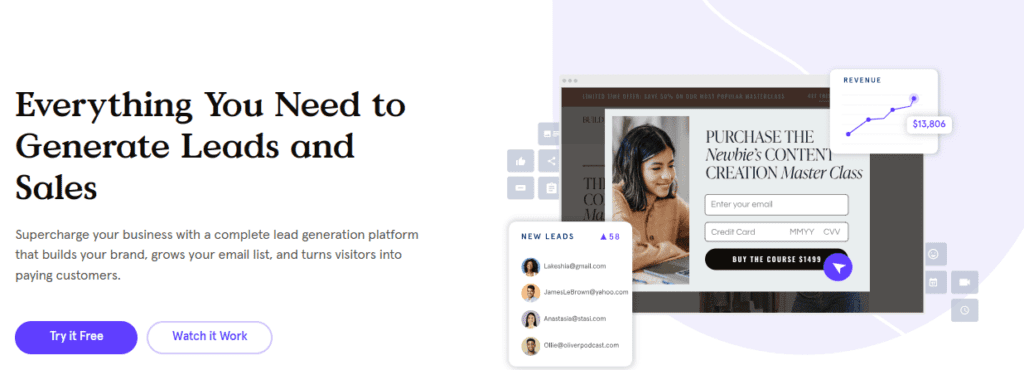

Unbounce is another leading platform for creating high-converting landing pages. It provides a flexible and powerful solution with a drag-and-drop builder, enabling users to create landing pages tailored to their needs. Unbounce offers a variety of customizable templates and advanced features such as A/B testing, dynamic text replacement, and seamless integration options. It focuses on helping businesses drive conversions and optimize their landing pages for maximum effectiveness. Unbounce is widely used by marketers and businesses looking to improve online conversion rates.
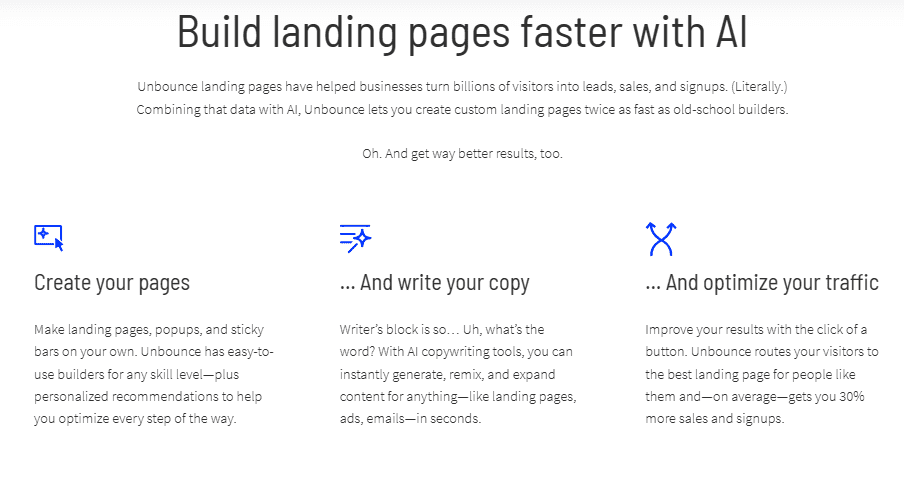

User Interface/Learning Curve:
Leadpages:
- User-Friendly Interface: Leadpages offers a user-friendly interface with a drag-and-drop editor that makes creating and customizing landing pages relatively easy. The intuitive interface requires minimal technical skills, allowing users to start and create professional-looking pages quickly.
- Pre-built Templates: Leadpages provides a wide range of templates you can choose from, simplifying the design process. These templates increase conversions and can be changed to fit your business and content requirements.
- Extensive Documentation and Support: Leadpages offers comprehensive documentation, tutorials, and support resources to help users navigate the platform. To address any issues that may arise, they provide video tutorials, articles in a knowledge base, and support staff.
Unbounce:
- Powerful Customization Options: Unbounce offers extensive customization capabilities, allowing you to create highly tailored landing pages. This level of customization gives you much freedom, but it may take a little more time and work to learn how to use all the features and choices.
- Learning Resources: Unbounce provides a rich set of learning resources, including documentation, video tutorials, webinars, and blog articles. These resources are designed to help users understand and make the most of the platform’s features.
- Pixel-Perfect Design: Unbounce allows users to achieve pixel-perfect design control by offering advanced customization options. Users can fine-tune the design elements, spacing, and alignment, ensuring the landing page looks precisely as intended.
- A/B Testing and Conversion Optimization: Unbounce strongly emphasizes A/B testing and conversion optimization. While this feature is valuable, it may require additional learning and understanding of testing methodologies to leverage it effectively.
Leadpages and Unbounce strive to make their platforms accessible and user-friendly. Leadpages may have a slightly quicker learning curve due to their simplicity and intuitive interface, especially for users with limited technical skills. Unbounce has many ways to customize it and advanced tools that may take more time and work to understand fully. However, both platforms provide ample learning resources and support to help users along their journey.
Landing Page Builder:
Leadpages:
- Drag-and-Drop Editor: Leadpages offers an intuitive drag-and-drop editor that allows you to build and customize beautiful landing pages without coding knowledge. You can drag and drop elements onto the canvas and arrange them according to your design preferences.
- Template Library: Leadpages provides a wide selection of professionally designed landing page templates for various industries and purposes. The template library covers a range of categories, including lead generation, webinar registrations, sales pages, and more.
- Customization Options: Leadpages allows you to customize the design of your landing pages, including text, colors, fonts, images, and backgrounds. You can modify the layout, adjust the spacing, and fine-tune the styling elements to create a visually appealing and cohesive design.
- Mobile Responsiveness: Leadpages ensures that your landing pages are mobile responsive. This means that the pages automatically adjust and display appropriately on different devices and screen sizes, providing a seamless user experience for mobile users.
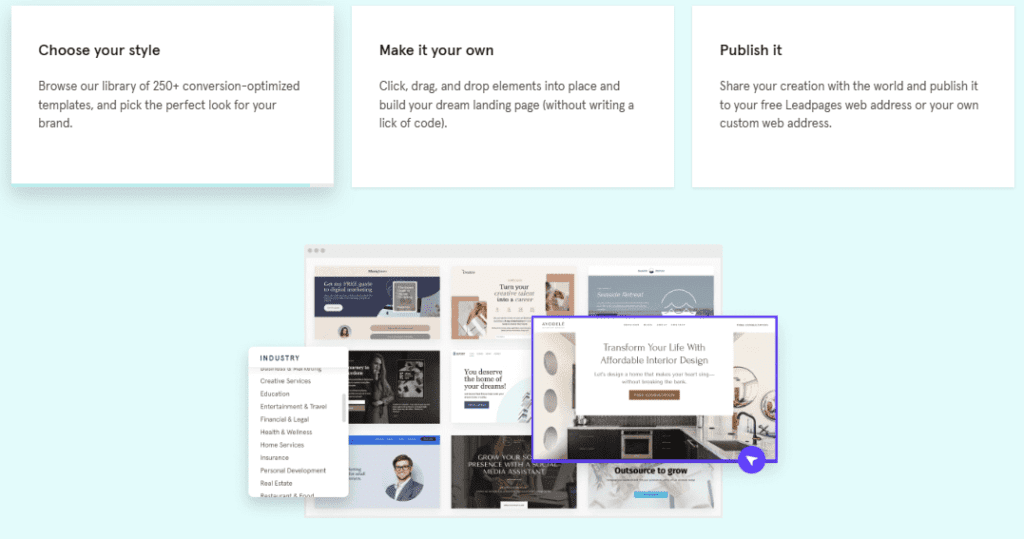

Unbounce:
- Drag-and-Drop Builder: Landing pages may be created and customized visually with Unbounce’s drag-and-drop builder. The builder provides a user-friendly interface where you can add, edit, and rearrange elements using drag-and-drop functionality.
- Template Library: Unbounce provides a diverse collection of customizable landing page templates suitable for various industries and goals. The template library covers a wide range of categories, such as lead generation, product launches, event registrations, and more. You can select a template and customize it to align with your branding and design preferences.
- Customization and Styling: Unbounce provides extensive customization options, allowing you to modify the layout, fonts, colors, and styles of your landing pages. You have granular control over design elements and can adjust the spacing, alignments, and other visual aspects to create a polished and professional look.
- Pixel-Perfect Design: Unbounce allows you to achieve precise design control by offering advanced customization options. You can fine-tune elements’ positioning, sizes, and spacing to ensure pixel-perfect alignment and achieve high design precision.
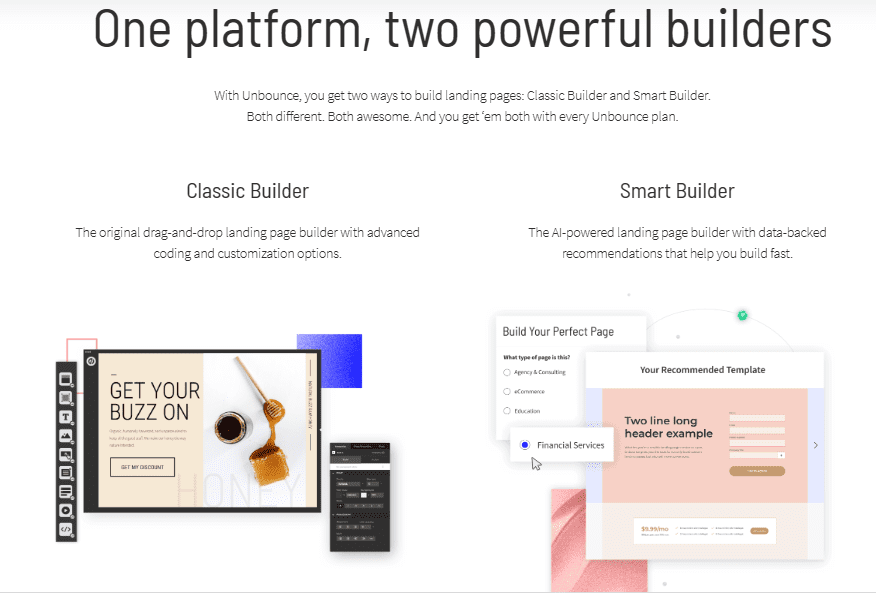

Leadpages and Unbounce provide user-friendly drag-and-drop builders with extensive template libraries and customization options. Leadpages focuses on simplicity and ease of use, while Unbounce offers more advanced customization capabilities, including the ability to achieve pixel-perfect designs.
Lead Capture and Opt-in Forms:
Leadpages:
- Lead Capture Forms: Leadpages lets you make forms that can be put on your landing pages to gather leads. These forms enable you to collect visitor information such as names, email addresses, phone numbers, and other relevant details.
- Form Customization: Leadpages offers customization options for your lead capture forms. You can choose from various form field types, such as text fields, checkboxes, and dropdowns. Additionally, you can customize the design and styling of the forms to match your branding.
- Integration with Email Marketing Tools: Mailchimp, ConvertKit, and AWeber are popular email marketing tools that work with Leadpages. This integration allows you to sync the leads captured through Leadpages’ forms automatically with your email marketing software for efficient lead nurturing and email campaigns.
Unbounce:
- Lead Capture Forms: The Lead Capture and Opt-in form can be customized to fit the specific needs of any business. Businesses can choose the fields they want to collect, such as name, email address, phone number, and company name. They can also choose the design and layout of the form.
- Popup Form: The Lead Capture and Opt-in form can be embedded in any landing page or website. It can also be used as a popup or sidebar form.
- Form Customization: Unbounce offers customization options for your lead capture forms. You can modify the form fields, add custom fields, and adjust the layout and styling to match your branding and design preferences.
- Form analytics: Businesses can track the performance of their form to see how many leads they are generating.
- Integration with Third-Party Tools: Unbounce allows you to integrate with various third-party tools and services, including email marketing software like Mailchimp, HubSpot, and Salesforce. This feature enables you to automatically send captured leads to your preferred email marketing tool or CRM system for efficient lead management.
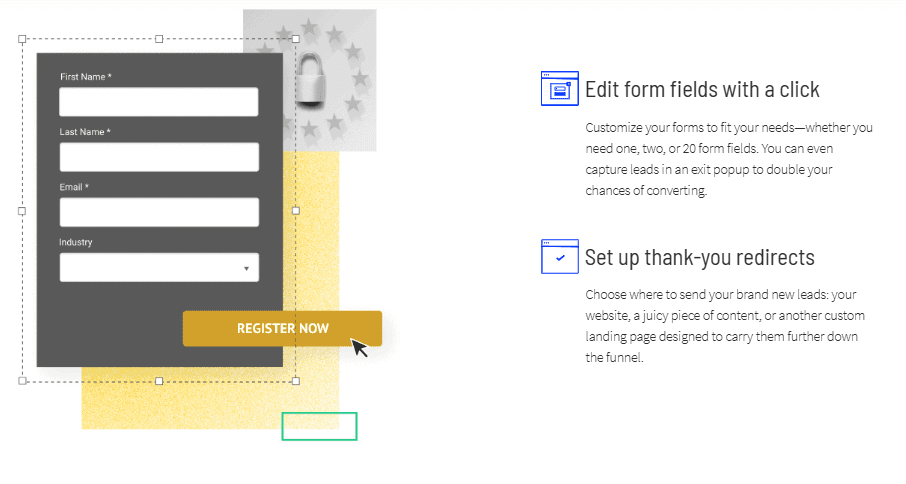

Leadpages and Unbounce provide lead capture form functionality, allowing you to collect visitor information and build your email list. They offer customization options for form fields and styling to align with your branding. Both platforms offer integrations with popular email marketing tools to streamline lead nurturing and email campaigns.
A/B Testing:
Leadpages:
- A/B Testing: Leadpages allows you to conduct A/B tests to compare different versions of your landing pages. You can create multiple variations of your landing page and test other elements, such as headlines, images, call-to-action buttons, or layouts, to determine which variations drive better conversions.
- Split Testing: Leadpages offers split testing functionality, where you can divide your traffic between different variations of your landing pages. This feature allows you to measure and compare the performance of each variation and identify the most effective version based on metrics like conversions, click-through rates, and bounce rates.
- Conversion Analytics: Leadpages has conversion tracking and analytics tools built so you can see how well your landing pages and A/B tests are doing. You can monitor key metrics, gain insights into visitor behavior, and make data-driven decisions to optimize your landing page conversions.
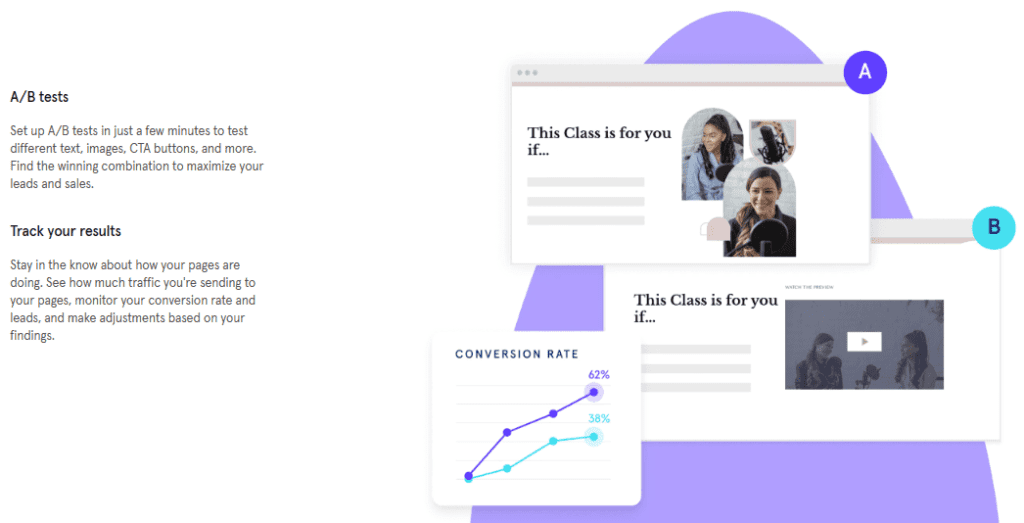

Unbounce:
- A/B Testing: Unbounce offers A/B testing capabilities that allow you to test different variations of your landing pages. You can make different versions of your landing page, change different parts, and then split your traffic between the different versions to see which ones convert better.
- Variant Testing: Unbounce allows individual testing elements and page variants. Unbounce lets you test individual parts and different versions of the whole page. This means you can make different versions of your landing pages and compare how well they work to find the best layout and content.
- Conversion Analytics: Unbounce provides detailed analytics and reporting features that give you insights into the performance of your A/B tests. You can track and examine critical metrics like conversions, click-through rates, and engagement to improve your landing pages and conversion rates.
Leadpages and Unbounce have A/B testing tools that can help you improve your landing pages and get more people to sell. Both systems let you make different versions of your landing pages and split your traffic to compare how well they work. They also provide conversion analytics to track key metrics and make data-driven decisions.
Conversion Tracking and Analytics:
Leadpages:
- Conversion Tracking: Leadpages provides built-in conversion tracking capabilities. You can track conversions on your landing pages, such as form submissions, button clicks, or other desired actions. This system allows you to measure the effectiveness of your landing pages in driving conversions.
- Analytics Dashboard: Leadpages offers an analytics dashboard to view key metrics and insights about your landing page’s performance. You can track metrics like conversion rates, click-through rates, bounce rates, and more. The dashboard provides a snapshot of your landing page performance at a glance.
- Integration with Google Analytics: Leadpages integrates with Google Analytics, allowing you to leverage the robust tracking and reporting capabilities of Google Analytics. You can set up advanced tracking, segment your traffic, and access detailed analytics reports to gain deeper insights into visitor behavior and conversions.
Unbounce:
- Conversion Tracking: Unbounce provides robust conversion tracking features. You can track conversions on your landing pages, such as form submissions, button clicks, or other desired actions. This helps you determine how well your landing pages are doing to get the desired results.
- Conversion Analytics: Unbounce offers detailed conversion analytics that allows you to monitor key metrics and analyze the performance of your landing pages. You can track metrics like conversion rates, click-through rates, engagement metrics, and more. This data helps you understand how well your landing pages convert visitors into leads or customers.
- A/B Testing Analytics: Unbounce provides specific analytics for A/B tests. You can track the performance of different variations of your landing pages, compare conversion rates, and determine the statistically significant winner. This function enables you to optimize your landing pages based on data-driven insights.
Leadpages and Unbounce have tools like conversion tracking and analytics that let you see how well your landing pages are doing. They offer insights into key metrics such as conversion, click-through, and engagement. Additionally, both platforms allow integration with external analytics tools, with Leadpages integrating with Google Analytics and Unbounce providing robust analytics capabilities.
Email Marketing Integration:
Leadpages:
- Email Marketing Integrations: Leadpages integrates with various popular email marketing services, including Mailchimp, ConvertKit, AWeber, GetResponse, Constant Contact, and many more. This feature lets you directly connect your lead capture forms and landing pages to your preferred email marketing platform.
- List Segmentation: With Leadpages’ integrations, you can segment your email lists based on the information collected through your lead capture forms. This enables you to send targeted and personalized email campaigns to specific audience segments.
- Automation and Autoresponder Integration: Leadpages integrates with email marketing automation tools, such as ActiveCampaign, Drip, and Infusionsoft, allowing you to set up automated email sequences and autoresponders triggered by specific actions or events.


Unbounce:
- Email Marketing Integrations: Unbounce provides integration options with popular email marketing services like Mailchimp, HubSpot, Salesforce, Marketo, Constant Contact, and more. This allows you to connect your lead capture forms and landing pages seamlessly with your email marketing platform.
- Form Submission Notifications: Unbounce allows you to set up form submission notifications to receive instant email notifications whenever someone submits a form on your landing pages. This ensures you can promptly follow up with leads and prospects.
- CRM Integration: Besides email marketing integrations, Unbounce offers integration with CRM systems like Salesforce, HubSpot CRM, and Zoho CRM. This lets you sync leads captured through Unbounce with your CRM for efficient lead management and follow-up.
Leadpages and Unbounce provide integration options with popular email marketing services, allowing you to connect your lead capture forms and landing pages with your email marketing platform. Both platforms offer a range of integration options to accommodate various email marketing preferences. Additionally, Unbounce offers CRM integration options for efficient lead management.
Automation:
Leadpages:
- Lead Notifications: Leadpages allows you to set up lead notifications to receive instant email alerts whenever a lead is captured through your landing pages. This helps you promptly follow up with leads and take immediate action.
- Integration with Email Marketing Automation Tools: Leadpages integrates with popular email marketing automation tools like ActiveCampaign, ConvertKit, and Drip. This lets you set up email sequences and autoresponders initiated by specific actions or events, like when a form is submitted or a link is clicked.
- Lead Magnet Delivery: Leadpages can automatically deliver lead magnets, such as e-books or whitepapers, to new subscribers. The lead magnet can be emailed to the customer or made available for instant download on the landing page.
Unbounce:
- Form Submission Notifications: Unbounce allows you to set up form submission notifications, which can be sent via email or integrated with other communication channels like Slack. These notifications provide instant alerts whenever a form is submitted on your landing pages.
- CRM Integration and Lead Routing: Unbounce integrates with CRM systems like Salesforce, HubSpot CRM, and Zoho CRM. This allows you to automatically send captured leads to your CRM for efficient lead management and follow-up. You can also set up rules for lead routing to ensure leads are distributed to the appropriate sales team members.
- Third-Party Integrations and Zapier: Unbounce offers integration with various third-party services and tools through Zapier. This lets you connect Unbounce with multiple applications and automate workflows across different platforms.
Leadpages and Unbounce provide automation features, but the focus and implementation differ slightly. Leadpages emphasizes email marketing automation with integration options for popular email marketing tools. On the other hand, Unbounce focuses on lead notifications, CRM integration, and lead routing and offers a broader range of third-party integrations through Zapier.
Customization:
Leadpages:
- Drag-and-Drop Editor: Leadpages has a drag-and-drop tool that makes it easy to change your landing pages even if you don’t know how to code. You can add, rearrange, and edit elements such as text, images, buttons, and forms by dragging and dropping them onto the page.
- Template Customization: Leadpages has a lot of carefully made templates that you can change to fit your brand and design tastes. You can customize the look of your landing pages by adjusting the themes’ colors, fonts, pictures, and layouts.
- CSS and HTML Editing: Leadpages allows advanced users to further customize their pages by enabling them to edit CSS and HTML code. This flexibility lets you make more intricate design changes or integrate custom elements into your landing pages.
Unbounce:
- Drag-and-Drop Builder: You can also use Unbounce’s drag-and-drop maker to change the look of your landing pages. You can easily add, edit, and rearrange elements on the page, such as text, images, buttons, and forms, by dragging and dropping them into place.
- Template Customization: Unbounce offers a variety of customizable templates that you can personalize to match your brand. You can modify the templates’ colors, fonts, images, and layouts to create a cohesive and branded look for your landing pages.
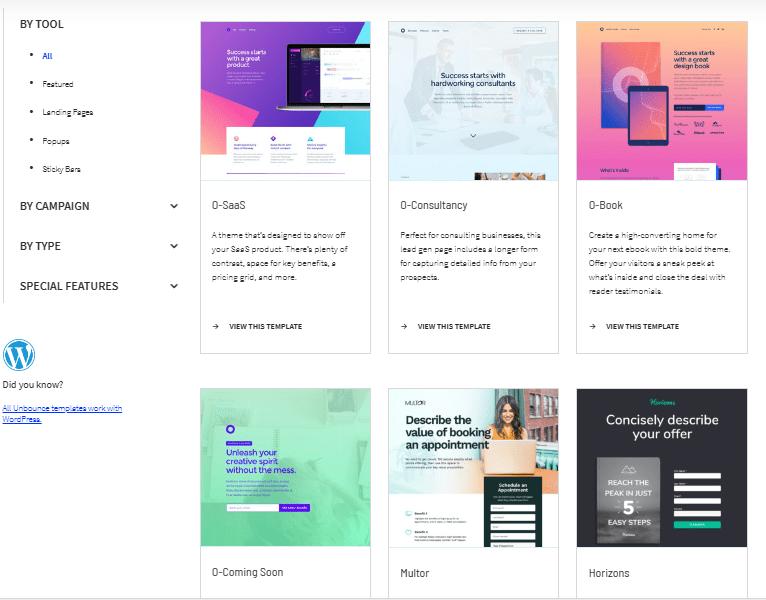

- Advanced Customization: Unbounce provides more advanced customization options for those who want granular control over their landing pages. You can edit CSS and HTML code directly within the platform, enabling you to make precise design changes and implement custom functionality as needed.
Leadpages and Unbounce offer drag-and-drop builders that simplify the customization process for landing pages. They provide template customization options to ensure your pages reflect your brand identity. Additionally, both platforms can edit CSS and HTML code for more advanced customization needs.
Mobile Responsiveness:
Leadpages:
- Responsive Design: Leadpages focuses on responsive design, which makes sure that your landing pages are designed for different devices and work well on mobile devices. When you use Leadpages’ platform to make landing pages, they instantly adjust to the screen size and resolution of the mobile device, making the user experience smooth.
- Mobile View: Leadpages has a mobile preview tool that lets you see how your landing pages look on different mobile devices and test them out. This helps you ensure your landing pages look and work right on phones and computers.
Unbounce:
- Responsive Design: Unbounce focuses on responsive design, ensuring your mobile-friendly landing pages are optimized for different devices. When you create landing pages using Unbounce’s platform, they automatically adapt to the mobile device’s screen size and resolution, providing a seamless user experience.
- Mobile Preview: Unbounce offers a mobile preview feature allowing you to preview and test how your landing pages appear on various mobile devices. This helps you ensure your landing pages look and function correctly on smartphones and tablets.
- Mobile-Friendly Templates: Unbounce provides a selection of mobile-friendly landing page templates designed to give an optimal user experience. You can change these templates to fit your image and content needs.
Leadpages and Unbounce focus on responsive design and mobile optimization for landing pages. Both ensure that the landing pages you create are responsive and perform well on mobile devices.
Integration:
Leadpages:
- CRM Integrations: Leadpages integrates with major CRM platforms such as Salesforce, HubSpot, Infusionsoft, and Zoho CRM. This allows you to sync captured leads with your CRM system for efficient lead management and follow-up.
- Webinar Integrations: Leadpages provides integration options with popular webinar platforms like GoToWebinar and WebinarJam. This lets you connect your landing pages seamlessly with your webinar registration and attendance process.
- E-commerce Integrations: Leadpages integrates with e-commerce platforms such as Shopify, WooCommerce, and Magento. This integration enables you to create landing pages for product promotions, sales funnels, or lead generation for your e-commerce store.


Unbounce:
- Analytics and Tracking Integrations: Unbounce integrates with Google Analytics, enabling you to track and analyze the performance of your landing pages. It also supports integration with other tracking tools, such as Facebook Pixel and Google Ads Conversion Tracking, for comprehensive campaign tracking.
- Third-Party Integrations via Zapier: Unbounce offers integration with numerous third-party apps and services through Zapier. This expands the possibilities for connecting Unbounce with other tools and automating workflows.
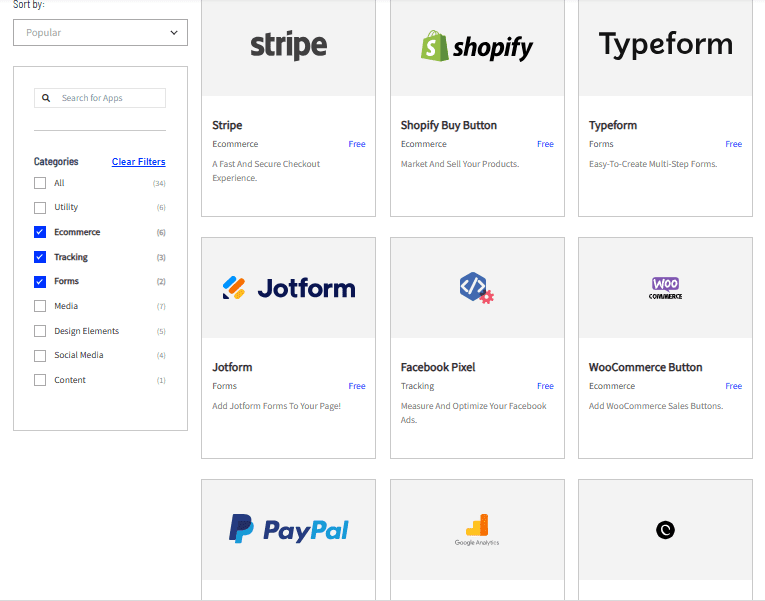

Leadpages and Unbounce offer extensive integration capabilities with popular marketing tools and platforms. They both provide options for email marketing integrations, CRM integrations, and analytics tracking. However, Leadpages offers more specific integrations with webinar and e-commerce platforms, while Unbounce delivers a wide range of third-party integrations through Zapier.
Customer Support:
Leadpages:
- Email Support: Leadpages offers email support for all users. You can email their support team to ask questions, seek assistance, or report any issues you may encounter. They strive to provide timely and helpful responses to user inquiries.
- Knowledge Base and Documentation: Leadpages maintains a comprehensive knowledge base with documentation, guides, and tutorials. Their knowledge base covers a wide range of topics, from getting started to more advanced features, providing self-help resources for users to find answers to their questions.
- Community and Webinars: People can talk to each other, share ideas, and ask for help in a group on Leadpages. They also hold webinars and training sessions daily to help users learn more about the platform, share the best ways to use it, and keep up with the newest features and methods.
Unbounce:
- Email and Live Chat Support: Users can get help through email and live chat. You can email or chat with their customer service team for help or questions. They answer user questions quickly and in a way that helps.
- Help Center and Documentation: Unbounce maintains a comprehensive help center with documentation, guides, and video tutorials. Their help center covers a wide range of topics, from getting started to more advanced features, serving as a valuable resource for users to find solutions and learn more about the platform.
- Phone Support (for higher-tier plans): Unbounce provides phone support for users on their higher-tier plans. This allows users to speak directly with a support representative for more immediate assistance with their inquiries or issues.
Leadpages and Unbounce strive to provide customer support and resources to assist their users. Leadpages offers email support, a knowledge base, and an active community, while Unbounce includes email and live chat support, a help center, and phone support for higher-tier plans.
Key Features of Leadpages That Unbounce Lacks:
- Website builder: Leadpages has a built-in website builder that allows you to create a complete website, not just landing pages. This can be useful if you want to create a landing page that is part of a larger website.
- Leadmeter: Leadpages’ Leadmeter feature predicts how optimized your landing page will be based on factors such as the headline, copy, and CTA. This can be helpful for optimizing your landing pages for conversions.
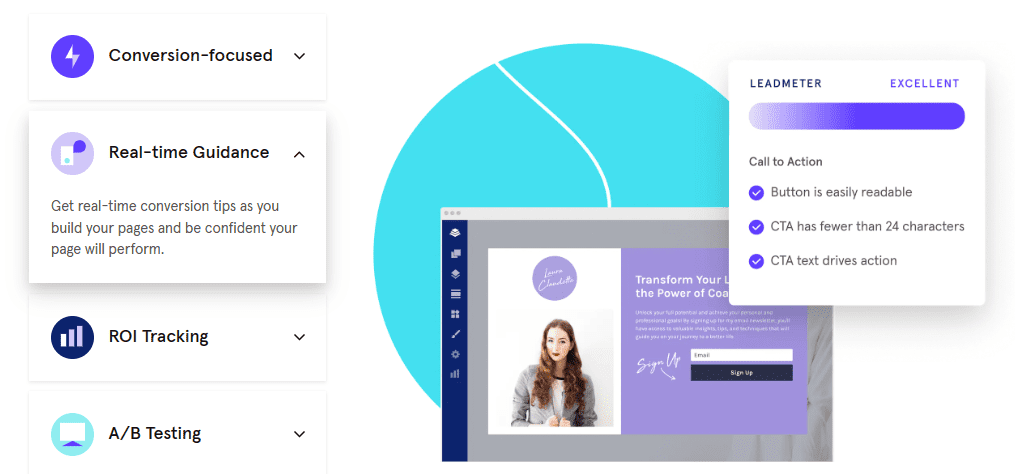

- Unlimited traffic: Leadpages offers unlimited traffic on all plans, which can be helpful if you have a high-traffic website or campaign.
- More integrations: Leadpages integrates with a wider range of other marketing tools than Unbounce. This can be helpful if you want to use Leadpages with other marketing software you already use.
- Template selection: Leadpages has a wider selection of templates than Unbounce.
Key Features of Unbounce That Leadpages Lacks:
- AI Optimization: Unbounce is the only landing page platform with AI conversion optimization—features that consistently improve your campaign performance.
- AI Copywriting: Unbounce provides a full AI copy generator—right inside their builder. Leadpages can generate a headline, but with Unbounce, you can generate copy for absolutely anything.
- Smart Traffic: It is an AI-powered algorithm that automatically routes visitors to the landing page that is most likely to convert them.
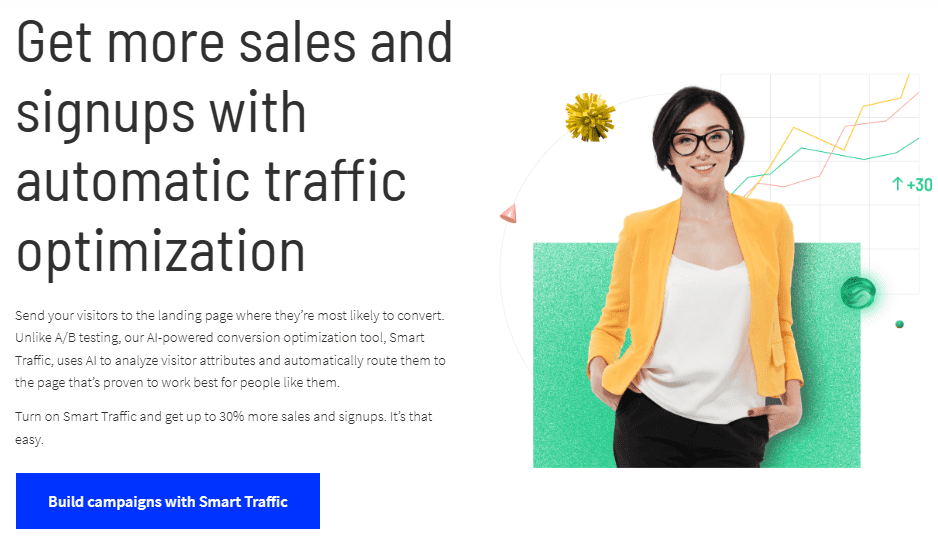

- Dynamic Text Replacement: This is a feature that allows you to automatically change the text on your landing pages based on certain criteria. For example, you could use Dynamic Text Replacement to change the headline on your landing page based on the visitor’s location or the keywords they used to find your landing page.
- AMP landing pages: Unbounce offers AMP landing pages, which are designed to load faster on mobile devices.
Target Market:
Leadpages and Unbounce target similar markets but may have slightly different focuses. Here’s a comparison of their target markets:
Leadpages:
- Small and Medium-Sized Businesses (SMBs): Leadpages primarily cater to small and medium-sized businesses. Its user-friendly interface, pre-built templates, and drag-and-drop editor make it accessible for business owners and marketers who may not have extensive technical skills or resources.
- Solo Entrepreneurs and Freelancers: Leadpages is excellent for solo businesses and freelancers who want to make landing pages that convert well without knowing much about coding or design. Its affordable pricing plans and ease of use make it a popular choice among individuals managing their online presence.
- Marketers and Marketing Teams: Leadpages are for marketers and marketing teams who want to improve their conversion rates and make it easier to get leads. Its features, such as A/B testing, lead capture forms, and integration options with email marketing and CRM platforms, cater to marketing professionals’ needs.
Unbounce:
- Digital Marketing Agencies: Unbounce is often favored by digital marketing agencies that require advanced customization options and flexibility in creating landing pages for their clients. Its extensive features, including A/B testing, advanced analytics, and integrations, make it suitable for agencies managing multiple campaigns.
- Conversion Rate Optimization (CRO) Specialists: Unbounce appeals to CRO specialists and professionals who focus on optimizing landing page performance. Its emphasis on A/B testing, dynamic text replacement, and detailed analytics provides the tools for in-depth optimization efforts.
- Enterprise-Level Businesses: Unbounce has plans and features for enterprise-level companies geared toward their needs. These plans often include dedicated support, enhanced security measures, and advanced integrations to meet the requirements of larger organizations.
While both Leadpages and Unbounce serve similar markets, Leadpages may have a more substantial presence among small and medium-sized businesses, solo entrepreneurs, and marketers. Unbounce, on the other hand, may have a greater appeal to digital marketing agencies, CRO specialists, and enterprise-level businesses due to its advanced customization options and additional features.
Pricing Plans:
Leadpages:
| Features | Standard | Pro |
| Price | $49/mo | $99/mo |
| Drag & Drop Landing Page Builder |                                                                                       |                                                                                       |
| Ai Engine Credits | 10,000/mo | 30,000/mo |
| Ai Engine Headlines + Images |                                                                                       |                                                                                       |
| Conversion tools |                                                                                       |                                                                                       |
| Optimized templates | 250+ | 250+ |
| Traffic & Leads | Unlimited | Unlimited |
| Custom domains | 1 | 3 |
| Integrations | 90+ | 90+ |
| E-commerce |           |                                                                                       |
| Tech support |                                                                                       |                                                                                       |
| Mobile responsive templates |                                                                                       |                                                                                       |
| Landing pages, pop-ups, and alert bars | Unlimited | Unlimited |
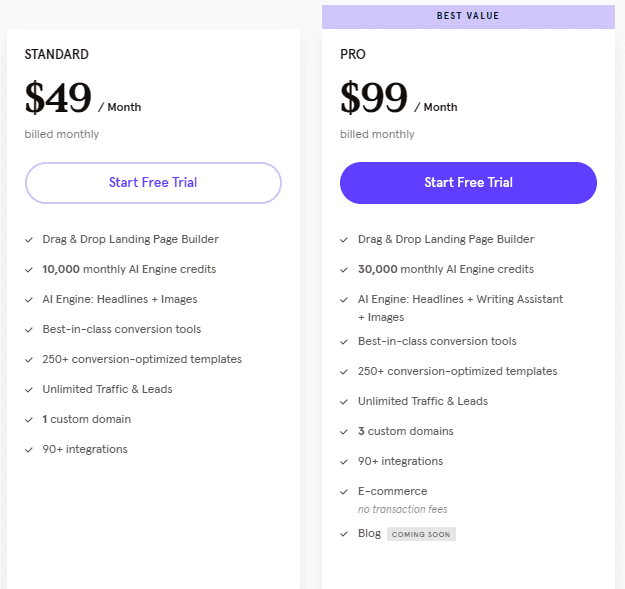

Unbounce:
| Features | Launch | Optimize | Accelerate | Concierge |
| Price | $74/mo | $109/mo | $180/mo | $469/mo |
| Landing pages, popup & sticky bar | Unlimited | Unlimited | Unlimited | Unlimited |
| Users | 2 | Unlimited | Unlimited | Unlimited |
| AI copywriting |                                                                                       |                                                                                       |                                                                                       |                                                                                       |
| Conversions | up to 500 | up to 1,000 | up to 2,500 | more than 5,000 |
| Visitors | up to 20,000 | up to 30,000 | up to 50,000 | more than 100,000 |
| Domains | 1 | 5 | 10 | 25 |
| Smart Builder |                                                                                       |                                                                                       |                                                                                       |                                                                                       |
| Unbounce apps |                                                                                       |                                                                                       |                                                                                       |                                                                                       |
| Optimized page sections |                                                                                       |                                                                                       |                                                                                       |                                                                                       |
| Smart copy |                                                                                       |                                                                                       |                                                                                       |                                                                                       |
| Multi-device page preview |                                                                                       |                                                                                       |                                                                                       |                                                                                       |
| Integrations |                                                                                       |                                                                                       |                                                                                       |                                                                                       |
| Classic Builder |                                                                                       |                                                                                       |                                                                                       |                                                                                       |
| A/B Testing |           |                                                                                       |                                                                                       |                                                                                       |
| Dynamic Text Replacement |           |                                                                                       |                                                                                       |                                                                                       |
| Advanced Targeting & Scheduling |           |           |                                                                                       |                                                                                       |
| Smart Traffic |                                                                                       |                                                                                       |                                                                                       |                                                                                       |
| Conversion goals |                                                                                       |                                                                                       |                                                                                       |                                                                                       |
| Fully customizable template |                                                                                       |                                                                                       |                                                                                       |                                                                                       |
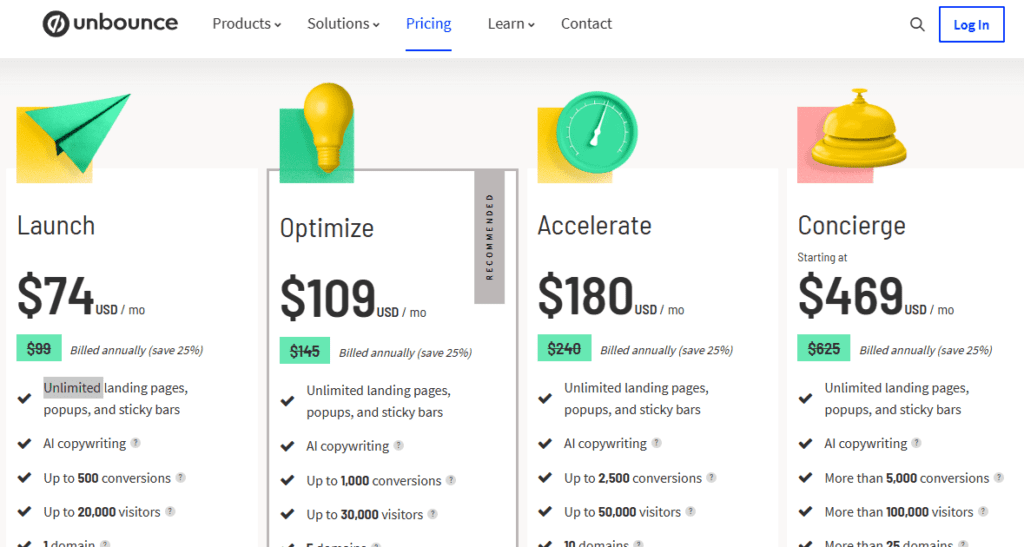

Pros and Cons:
Leadpages Pros:
Leadpages Cons:
Unbounce Pros:
Unbounce Cons:
Final Thoughts/Recommendations:
Leadpages and Unbounce are powerful landing page builders offering a range of features and functionalities to help businesses create high-converting landing pages. While they share similarities in terms of their purpose and target market, there are notable differences in their specific features, pricing plans, and integrations.
Leadpages stands out with its user-friendly interface, extensive template library, dedicated mobile app, and focus on simplicity. It is well-suited for small and medium-sized businesses, solo entrepreneurs, and marketers who prioritize ease of use and quick setup.
On the other hand, Unbounce offers advanced customization options, robust A/B testing capabilities, and a focus on conversion rate optimization. It caters to digital marketing agencies, CRO specialists, and enterprise-level businesses that require flexibility, advanced features, and detailed analytics.
Recommendations:
- Leadpages is recommended for businesses and individuals who value simplicity, ease of use, and quick setup. If you’re a small or medium-sized business, a solo entrepreneur, or a marketer seeking an intuitive platform to create effective landing pages, Leadpages could be a suitable choice.
- Unbounce is recommended for those who require advanced customization, extensive A/B testing, and in-depth optimization features. If you’re a digital marketing agency, a CRO specialist, or an enterprise-level business looking for sophisticated landing page capabilities, Unbounce provides the flexibility and tools you need.


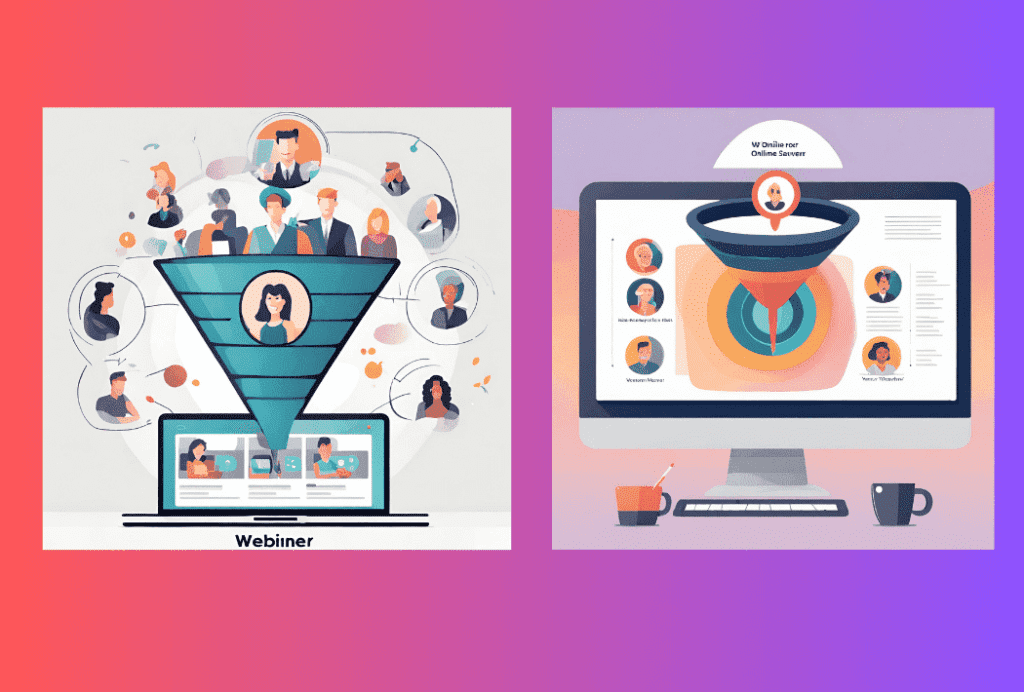
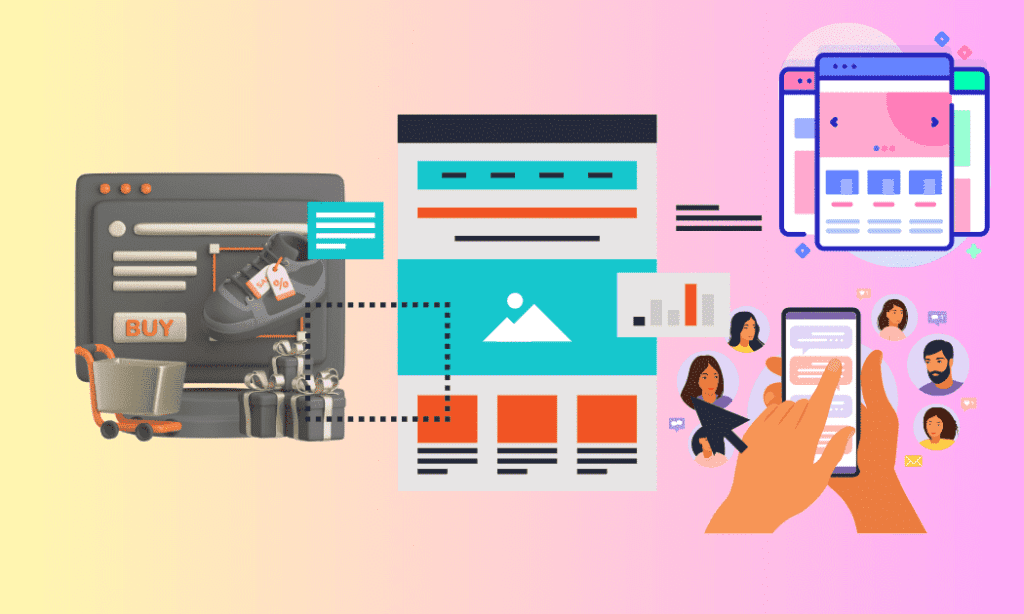
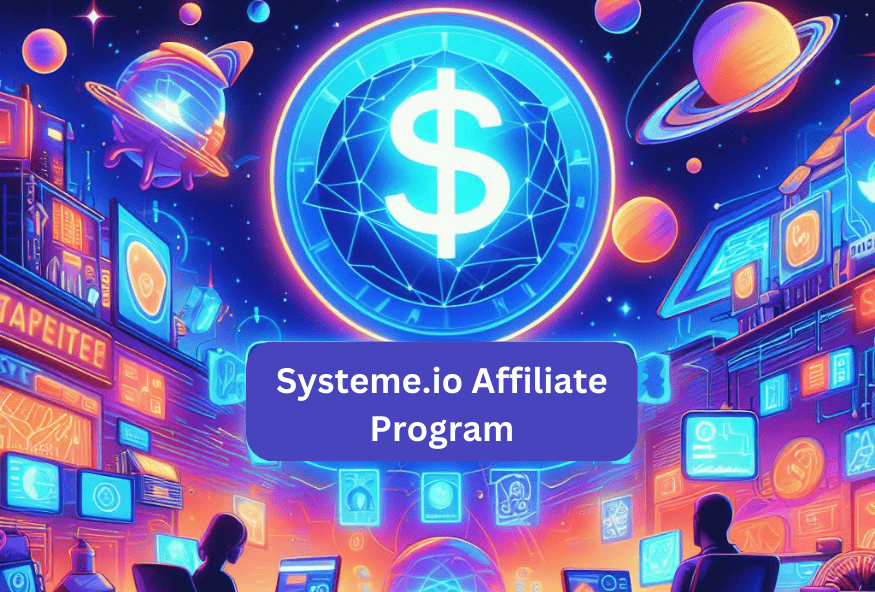
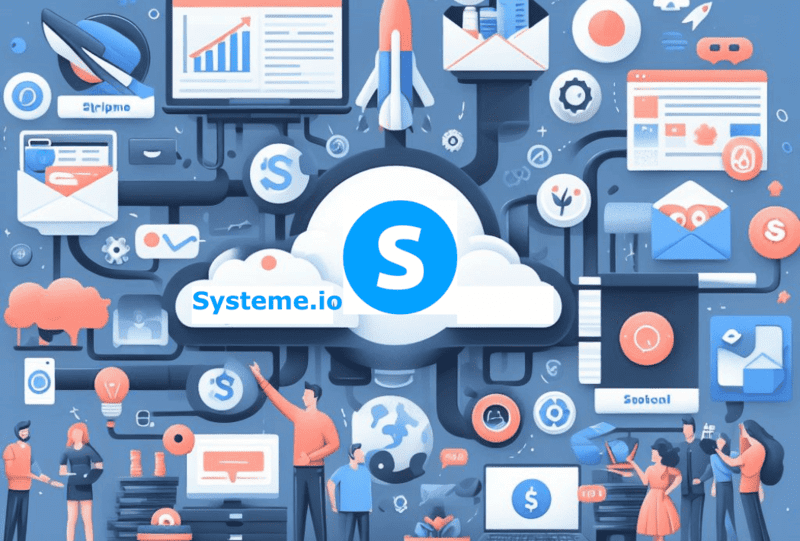




2 Comments